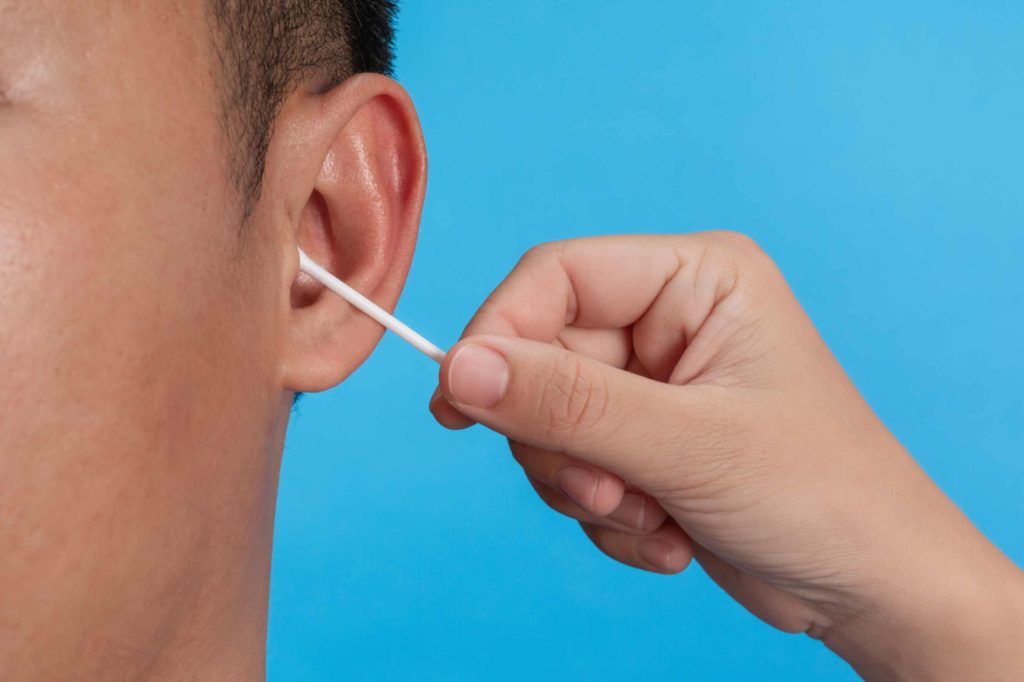
Earwax or cerumen, is a natural substance produced by the glands in your ear canal. It serves several essential purposes, including protecting your ears from dust, debris, and microorganisms. However, for some people, earwax can become a persistent issue, leading to chronic buildup. This can cause a variety of symptoms and complications, making it important to understand how to manage and prevent this condition.
What is Earwax Buildup?
Earwax is normally produced and expelled from the ear naturally. However, in some cases, the wax can accumulate and harden, leading to what is known as earwax buildup or impaction. When this happens, the earwax can block the ear canal, causing discomfort and other symptoms.
Symptoms of Earwax Buildup
One of the first signs of ear wax buildup is a feeling of fullness or blockage in the ear. This sensation can be quite uncomfortable and may worsen over time if the buildup is not addressed. Other common symptoms include:
- Decreased Hearing: One of the most noticeable effects of earwax buildup is reduced hearing. As the wax accumulates, it can block sound waves from reaching the eardrum, making sounds appear muffled or distant.
- Pain: Can earwax buildup cause pain? Yes, it can. As the wax hardens and presses against the sensitive skin of the ear canal, it can lead to discomfort or even sharp pain. This pain might worsen if the buildup is left untreated.
- Dizziness: Earwax buildup can also lead to a sense of imbalance or dizziness. This occurs when the buildup affects the inner ear, which plays a crucial role in maintaining your balance.
- Tinnitus (Ringing in the Ears): Many people with chronic earwax buildup experience a ringing or buzzing sound in their ears, known as tinnitus. This can be both annoying and distressing.
- Cough: In some cases, earwax buildup can irritate the nerves in the ear, leading to a reflex cough.
Can Earwax Buildup Affect Hearing?
The answer is yes. One of the most common and concerning symptoms of earwax buildup is its impact on hearing. When ear wax blocks the ear canal, it prevents sound. from reaching the eardrum effectively. This can lead to temporary hearing loss, which can be particularly frustrating if it occurs frequently.
If you experience sudden or significant hearing loss, it’s important to seek medical attention promptly. While earwax buildup is a common cause of hearing loss, other more serious conditions could also be responsible.
Causes of Chronic Earwax Buildup
While earwax buildup can happen to anyone, certain factors make some individuals more prone to chronic issues. These include:
- Narrow or Shaped Ear Canals: People with naturally narrow or oddly shaped ear canals may find it difficult for earwax to exit the ear naturally, leading to frequent blockages.
- Excessive Earwax Production: Some individuals naturally produce more earwax than others, which can lead to a higher likelihood of buildup.
- Use of Hearing Aids or Earplugs: Regular use of hearing aids or earplugs can prevent earwax from exiting the ear canal, leading to accumulation over time.
- Cotton Swabs: Many people use cotton swabs to clean their ears, but this can push the wax deeper into the canal, making the problem worse.
How to Deal with Chronic Earwax Buildup
If you suspect you have chronic earwax buildup, there are several steps you can take to manage the condition and prevent complications.
1. Avoid Using Cotton Swabs
One of the most important things you can do is avoid using cotton swabs or other objects to clean your ears. While it may seem like a quick fix, these tools can actually push the wax deeper into the ear canal, worsening the problem.
2. Use Earwax Softeners
Over-the-counter earwax softening drops can help to loosen and soften the wax, making it easier for it to exit the ear naturally. These drops are usually made from ingredients like hydrogen peroxide, mineral oil or glycerin. Simply apply a few drops to the affected ear and allow them to work for a few minutes before gently flushing the ear with warm water.
3. Try Irrigation
Ear irrigation is another effective method for removing earwax. This involves flushing the ear canal with water or a saline solution to wash away the wax. You can do this at home using a bulb syringe or seek professional assistance if you’re unsure about the process.
4. Regular Check-Ups
For those prone to chronic earwax buildup, regular check-ups with a healthcare professional can help prevent the problem from getting out of hand. Your doctor can monitor your ear health and remove any wax before it becomes a significant issue.
5. Consider Professional Ear Microsuction
If home remedies don’t work or if you’re experiencing significant symptoms like pain or hearing loss, it’s time to visit a professional. Experts can safely remove the wax using specialised tools, such as a curette or suction device. This method is particularly useful for people with chronic earwax buildup, as it ensures that all the wax is removed without damaging the ear canal.
Ear microsuction is a safe and effective method for removing earwax. It involves using a small suction device to gently remove wax from the ear canal. Unlike other methods, micro suction doesn’t require water, making it a good option for those with sensitive ears or previous ear infections.
Book an Appointment for Earwax Removal at Aroga Pharmacy
Chronic earwax buildup can be an annoying and sometimes painful condition, but it’s manageable with the right approach. By understanding the symptoms and causes and taking steps to prevent and treat buildup, you can keep your ears healthy and avoid complications.
If you’re dealing with earwax buildup and need professional help, Aroga Pharmacy in Farnham Common offers expert ear microsuction services in Slough and earwax removal in Gerrards Cross. Our experienced team uses the latest techniques to ensure your ears are clear and healthy. Book an appointment today and let us take care of your ear health. Contact us now to schedule your visit!
